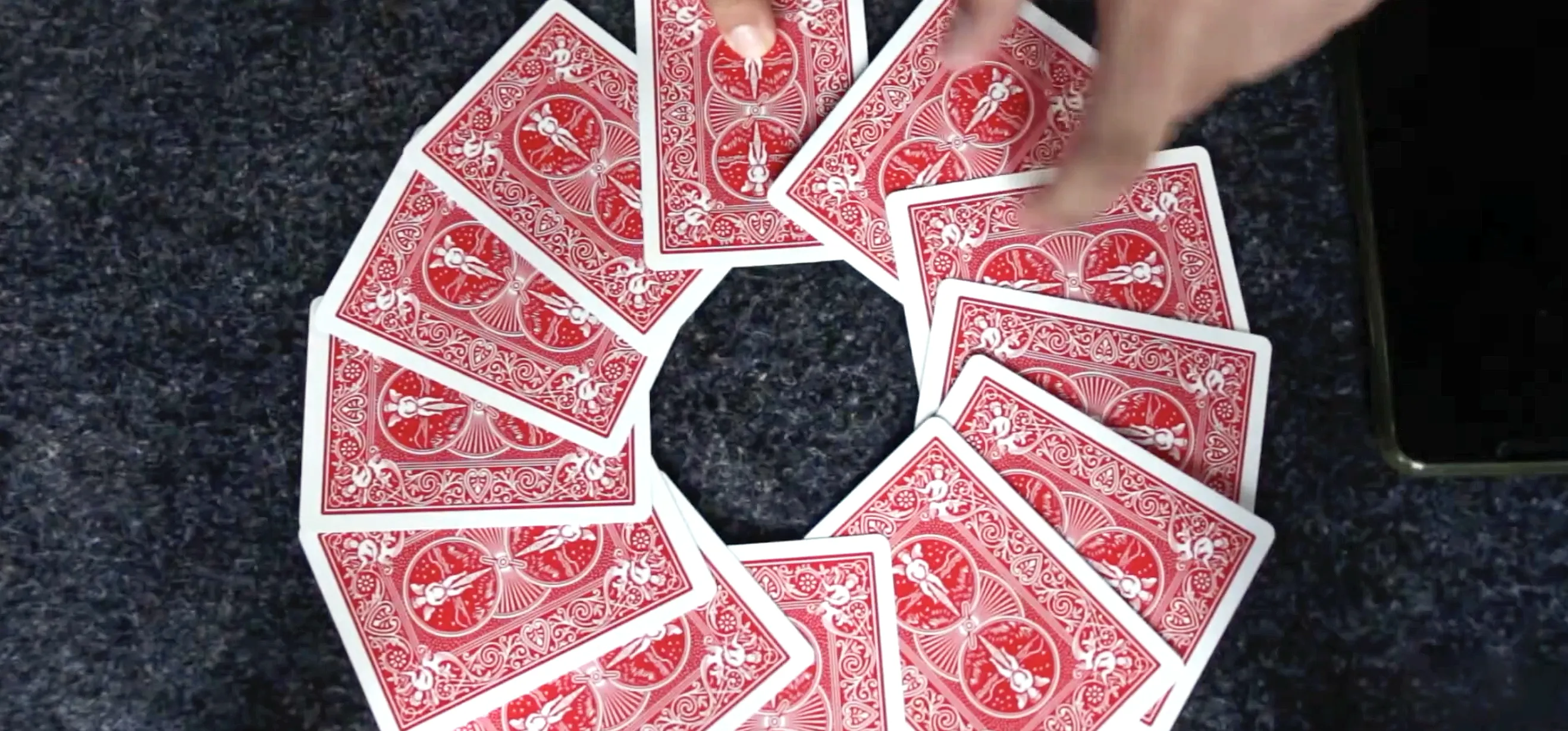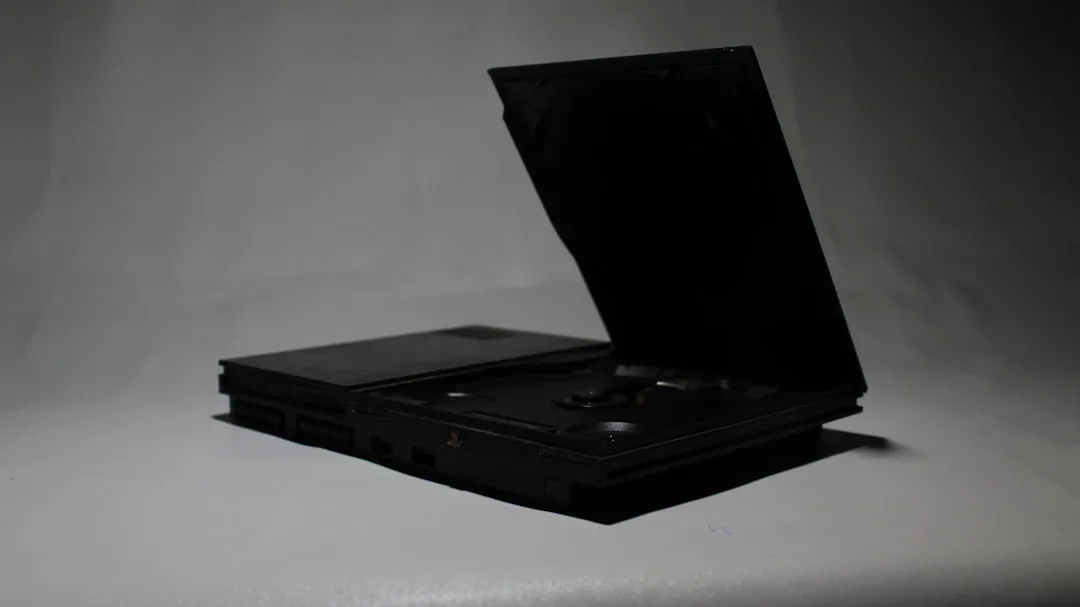

how to
Water, Lemon Juice, Vinegar, or Nothing: Should You Even Bother Rinsing Chicken?


how to
How to Roll Sushi — The Ultimate Guide


how to
How to Tell if Your 'Expired' Eggs Are Still Good to Eat

In this video, John E. Hiker walks you through the basics of building a campfire at a cold winter campsite in Olympic National Park. John shows you step by step how to gather the best wood and light a fire using a fire starter. Fire starters are considered to be one of the "ten essentials" for backcountry travelers, so you should carry it with you and plan to use it at your camp. Getting to camp cold and wet at the end of a long day is no time to be a survivalist and try to light a fire with...

In this video tutorial, former Outward Bound instructor and mountaineering guide John E. Hiker demonstrates a basic technique for safely fording (crossing) a river. Typically, more hikers are killed each year from drowning while fording rivers than by bear attacks, falls, avalanches, and all other wilderness hazards combined. The technique shown here is especially useful for those crossing a deep river with a heavy backpack.


Keeping your feet warm in the winter is key to your overall warmth, and to that end having high-quality, good-condition winter boots are key. Watch this video to learn a bunch of ways you can clean and maintain your winter boots and keep them looking good and warm as can be.


In this tutorial, we learn how to choose and use a walking stick. Find a large and firm stick that you find, then make sure it's dried out. Next, you will shave down the wood so that it doesn't give you blisters on the inside of your hand. After this, you will use hot air to bend the stick so that it is straight instead of crooked. Cut the stick to the size you need depending on how tall you are. The top of the stick will be jointed and have a cover over it so it's comfortable to grab. You can...


In this tutorial, we learn how to fit a backpack for long distance hiking. For scouts, look for a backpack with an adjustable torso so the pack can grow with you. After this, have the sales staff help you adjust your pack correctly, and measure how long the pack is on your back. You want the pack to fit you perfectly so you don't have back problems later. Try the pack on both on the hip section and shoulder to see how it feels on you. Tighten any adjustments to make it more secure, then you...


If you have a trekking pole then you, like Nintendo Wii owners everywhere, have probably wondered at and then spurned the wrist straps attached to your device. Don't do it! This video will teach you how to use your trekking pole strap correctly to reduce the strain on your hand while hiking, allowing you to go on for longer more comfortably.


Trekking poles make carrying heavy load across long distances on foot, like you do when you're on a backpacking trip, much easier. This video will help you make sure you're getting the most out of your trekking poles by teaching you how to make sure that your poles are the correct height for the situation that you are in. Get the most out of your modern hiking technology!


Trekking poles are the fancy, adjustable, modern version of the walking sticks of yore. If you are lucky enough to be using one on a long hike, make sure that you are using it properly! This video will teach you how to adjust your trekking pole to the proper height, ensuring that it is helping you carry your load as much as it can.


Geocaching is one of the many fun ways that internet technology has improve our lives, allowing people to leave essentially buried treasure anywhere in the world, then post GPS coordinates on the internet to allow other travelers to find it. This video offers a tip for geocache enthusiasts traveling with their families: download the coordinates for geocaches near your vacation destination before you leave, so that while you're on your trip you can geocache to you heart's content without having...


Duct (or Duck) tape is one of the most useful products for repairing things (and we mean anything) every invented. This video explains why and how you should bring a few feet of duct tape with you when you go for a long backcountry hike. By wrapping it around your trekking pole, you can store it easily and you will have it available when something breaks.


In this Outdoor Recreation video tutorial you will learn how to decoratively wrap a wooden staff in rope. First make the clove hitch at one end of the wooden staff, and tighten it firmly. Pass the rope around the staff and take the working end of the rope above the standing end, take another turn and pass it under itself. Push the knot to the end of the staff and tighten firmly. Next step is making a spiral hitch. Take the other end of the rope to the other end of the staff, put a half clove...


In this video, we learn how to prepare a pack for 2 days and 1 night of hiking. Each person has different needs, so change according to your preferences. Something important is to pack something to sleep on, which would be a hammock and blanket. Also, pack a Bible if you are religious. Hand sanitizer is a must-have for any hiker to kill germs that can cause illness. Make sure you have water bottles packed as well as a GPS and compass. Two different compasses are a good idea just in case one has...


In this video David Atkinson guides us through how to pack a backpack for a camping trip. The first step would be to include the bed and breakfast gear (tent, sleeping bag, sleeping pad clothes and water)and then we need stone fuel for cooking and cook kit, food, headlamp, toilet paper, a shovel rain gear and weather appropriate clothing. When you have decided on your luggage you have to organize it properly, starting to put the heavy things (tent, stones, cook kit) in the middle on the...


The video demonstrates how you should pack to be fully equipped and prepared for a backpacking trip that lasts 2-3 days. Gather all of your equipment including clothes, food, water, climbing gear, emergency kit, sleeping back, and more. When you start to pack, you want to make your center of gravity is very low so pack your heavier items near your back and lighter ones that aren’t required immediately during your trip such as your sleeping bag at the bottom of the backpack. Also remember that...


This video illustrate us how to wear and distribute the load of your hiking backpack. Here are the following steps:


Fitclimb.com shows viewers how to put on a hiking backpack properly in this video. To begin, take the straps in both of your hands. Bend your knees, and keep your back straight. In this stance, pick the backpack up and set it on one of your legs, just above the knee. Put the arm that is on the same side of the body as the leg your backpack is resting on through the backpack strap. Put the backpack on your back, then put your other arm through the corresponding strap. Adjust the belt that...


This video gives you tips on how to pack your backpack for wilderness hiking. A standard backpack will do just fine. As for the gear, there are a few essential items that you must pack, such as a sleeping bag and a ziploc bag to keep your clothes dry and bowls and spoons. You can combine a spoon and a fork and use a spork for the best combination. Other things such as measuring cups are also useful. Toilet paper is very handy, and pots and pans are essential for cooking things you catch. Other...


Is it time for your planned hiking adventure? Hiking is great, but mountain hiking, through the brush and rocks, is even better. Going for a hike in the mountains can be exhilarating, but it also has its dangers. Make sure you pack for the occasion.
Featured On WonderHowTo:
Productivity & Shortcuts


how to
How to Use a machete safely This short safety guide Colhane gives you several tips to use a machete safely without harming your self or others. These tips are not only limited to machetes but can be applied to the general use of all large knives. The first rule is always cut away from your body as shown in the video the consequences of not following this rule can be deadly. The next tip gives you the optimal angle to cut through trees and other foliage. He also gives several tips on how to create a trail and follow it in...


On this video from Bushcraft Machete, he explains the purpose of a scandi edge and how to use it. He uses the machete as a planer, stripping the bark from a log by holding the machete almost flat against the log and tapping the back of the blade with a stick. He explains that a scandi edge is sharpened all the way down to a point and has a very low angle. This type of edge makes the machete useful for carving off thin strips of wood. He has sharpened his machete with a scandi edge near the...


In this video, Chopping It Up, we see how some men camping and scouting in the remote central Brazilian jungle hack their way through the thick brush with machetes. We watch as they clear a path to the top of a mountain. It's a lot of work! We're told how they identified a route where the need for hacking would be minimized, on an old trail. The problem, however, is the sunlight on an old trail causes it to get choked up with vines and other thick growth. To clear the path with the...


how to
How to Use a machete See the angled edge of the blade? This is the bevel angle. Match this to the face of the whetstone. For a clever-like tool like a machete, this should be at a high angle--15 to 25 degrees.


This video explains the Machete field sharpening. This sharpening method is very easy for sharpening the knives and blades. The man in the video is explaining a sharpening method using a new machine which uses microwave for sharpening thick and hard knives. By using a dynogram and adjusting the microwave the knife can be sharpened. The process of sharpening is by just touching the dynogram through the flattened edge of the knife. This is a very easy process for sharpening the knife. He is also...


how to
How to Go Geocaching safely Geocaching can be a fun hobby for outdoorsy types of all ages. But it also presents its share of dangers, especially for kids. In this short video, Prospector Pete offers up tips to keep kids safe when they are Geocaching in the wild.
Featured On WonderHowTo:
Music & Audio


Wade Bourne of MyOutdoorTV.com shows you how important it is to take care of leather hiking boots.


A short how to video on how to perform a safe stream crossing or ford using trekking poles when ultralight backpacking. Hiking or trail running often involves crossing or fording rivers and streams. Make sure you cross the water properly so that you don't get caught in a current or injured on rocks.


how to
How to Hike Hiking is easy with these tips. Get advice on backpacking, hiking, and the great outdoors in this video tutorial. Take action: pace yourself, don't take too many long breaks, maintain good posture, keep a light spring in your step, and bring plenty of food and water. John Flaherty, the instructor of this how-to video from Live Strong, has a great love for the outdoors. In 2003, John and his wife started Central Coast Outdoors in northern California. His company provides hiking, kayaking, and...


Preparing for a hike is easy with these tips. Get advice on backpacking, hiking, and the great outdoors in this video tutorial. Take action: use appropriate footwear, bring a first-aid kit, water, and food, and use walking sticks in uneven terrain. John Flaherty, the instructor in this how-to video from Live Strong, has a great love for the outdoors. In 2003, John and his wife started Central Coast Outdoors in northern California. His company provides hiking, kayaking, and biking services for...


Packing for a hiking trip is easy with these tips. Get advice on backpacking, hiking, and the great outdoors in this video tutorial. Take Action: pack heavy items at the bottom, bring extra water, and include a first-aid kit in your pack. John Flaherty, the instructor in this how-to video, has a great love for the outdoors. In 2003, John and his wife started Central Coast Outdoors in northern California. His company provides hiking, kayaking, and biking services for those wanting to be closer...


how to
How to Break in hiking boots Breaking-in hiking boots can be a pain. Get tips and advice on backpacking, hiking, and the great outdoors in this video tutorial. Take action: use more time to break in bigger boots, wear boots around the house first, and avoid long hikes. John Flaherty, the instructor in this how-to video from Live Strong, has a great love for the outdoors. In 2003, John and his wife started Central Coast Outdoors in northern California. His company provides hiking, kayaking, and biking services for those...
Featured On WonderHowTo:
Augmented Reality


how to
How to Choose hiking gear Picking hiking gear is easy with these tips. Get advice on backpacking, hiking, and the great outdoors in this video tutorial. Take action: purchase a quality backpack with a good hip belt, bring some sort of shelter, bring plenty of food and water, and pack clothing for appropriate weather. John Flaherty, the instructor in this how-to video from Live Strong, has a great love for the outdoors. In 2003, John and his wife started Central Coast Outdoors in northern California. His company provides...


how to
How to Go backpacking Backpacking is easy with these tips. Get expert advice on backpacking, hiking, and the great outdoors in this video tutorial. Take action: keep weight off of shoulders, bring plenty of snacks and water, maintain healthy exercise, and consult a guidebook to determine an appropriate trail. John Flaherty, the instructor of this how-to video from Live Strong, has a great love for the outdoors. In 2003, John and his wife started Central Coast Outdoors in northern California. His company provides...


how to
How to Keep your knife sharp Check out this instructional hiking video to learn 5 simple steps to maintaining a sharp, rust-free blade. Here's a backpacking tutorial video from the Backpacker's Gear School in the March 2007 Gear Guide. One of the key tips to keeping your knife sharp is to clean it after every trip. Learn other important tips to keep your blade nice and clean for your next hiking expedition.


how to
How to Repair snowshoes Learn simple repair tips and the tool kit you'll need to keep your snowshoes chugging all winter long with this report from the December 2006 issue of Backpacker Magazine. Associate editor Jason Stevenson covers all the snowshoe snafus--from plastic zip ties to replace stripped rivets to extra webbing to cinch down shredded bindings--in this backpacking tutorial video. Repair your snowshoes and continue your backpacking expedition!


Russell Weekend Adventurer explains how he carries duct tape on the trail while hiking to fix little unwanted problems like tears and such. This how-to video is good whether you plan to live in the wilderness, camp overnight, or take day trips. Why put duct tape on your water bottle while hiking? Duct tape fixes a lot of things. Use about three feet of duct tape so you can pull it off and apply it to blisters or your tent.


how to
How to Use a compass Outdoor expert Graham Thompson shows you how to use a compass. Watch and learn!
Featured On WonderHowTo:
Gaming


This video shows you what to bring for a hike.


The advice from this video by the National Park Service is: 1. Make loud noises so you don't sneak up on them 2. Carry a bear spray 3. Know the difference between a black bear and a grizzly bear.So watch this video and get more details on how to be safe in bear country - whether hiking or camping.


Knowing how to read trail signs is a necessary trail skill. Russell the Weekend Adventurer shows how to read signs for hiking the Appalachian trail.


Don't pull a muscle getting a pack on your back. If you don't have a friend to help or a rock to rest it on, here's how to do it safely and easily. Learn more from Backpacker's Gear School in the March 2007 Gear Guide, and at www.backpacker.com/video.


No water should be considered safe unless it is treated. Please take all precautions before drinking water you find in creeks and streams. Even water that looks safe may contain harmful bacteria and viruses. Learn how to recognize water that is safe to drink.


Learn how to navigate while hiking using a compass and Global Positioning System (GPS).


how to
How to Pack a daypack This video is a describing a day pack, with suggested items a person might carry with them on a day long hiking trip.


how to
How to Hold trekking poles Kristin Hostetter, Backpacker's Gear editor, shows you how to hold trekking poles to hike longer and higher with fewer aches and pains. Learn more from Backpacker's Gear School in the March 2007 Gear Guide.


Is your hydration bladder collecting mold? Here are 3 new solutions for common backcountry drinking problems--as explained by Backpacker editor-in-chief Jon Dorn. Learn more from Backpacker's Gear School in the March 2007 Gear Guide, and at www.backpacker.com/video.


Finding out your torso length is half the battle. Backpacker's Gear editor Kristin Hostetter explains all the strategies to you need to find a good-fitting backpack--from how to simulate a fully-loaded pack, to what to look for in hip belts and shoulder straps. Learn how to find your perfect pack at Gear School - straight from the pages of the March 2007 Gear Guide.


Knowing your torso length is crucial to finding the best-fitting backpack for your body type. Don't estimate a pack size using the clothing standbys of tall, medium, and petite: a 6-foot guy can have a shorter torso length than a 5'10" woman. Backpacker's Gear editor Kristin Hostetter explains the correct way to measure your torso length. Learn more important skills with Backpacker's Gear School videos - straight from the pages of the March 2007 Gear Guide.


how to
How to Fit boots for hiking Learn how to buy a pair of hiking boots, and what you can do to prevent blisters, sore arches, even chronic foot problems in 6 easy steps. Backpacker magazine editors Jason Stevenson and Jackie Ney show you how. Learn more from Backpacker's Gear School in the March 2007 Gear Guide, and at www.backpacker.com/video.


These simple tricks can prevent typical trail maladies and keep your hike going. Learn more from Backpacker's Gear School in the March 2007 Gear Guide, and at www.backpacker.com/video.


Backpacker editor-in-chief Jon Dorn explains 5 field-tested techniques for eliminating the three main causes of blisters: heat, moisture, and friction. Learn more from Backpacker's Gear School in the March 2007 Gear Guide, and at www.backpacker.com/video.


Jon Dorn goes to the kitchen to teach you how to bake perfect treats every time on the trail. Learn more from Backpacker's Gear School in the March 2007 Gear Guide, and at www.backpacker.com/video.












































































































































































